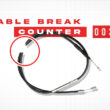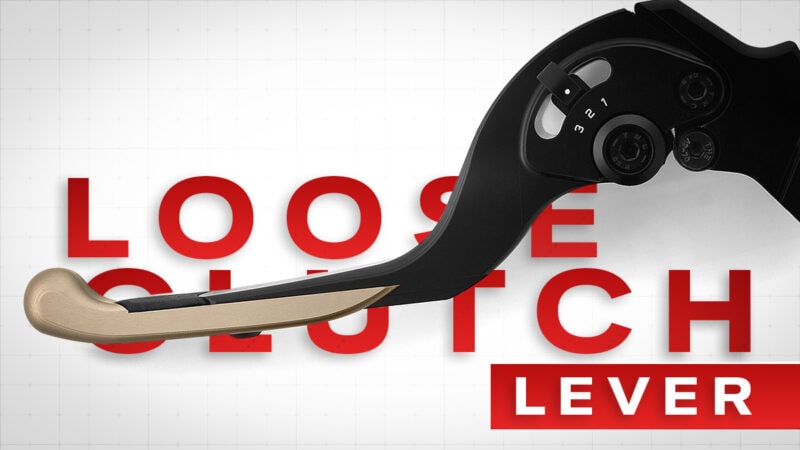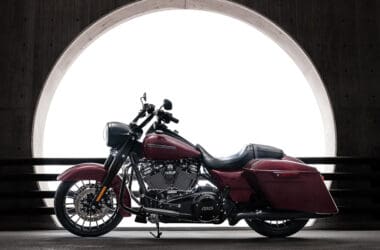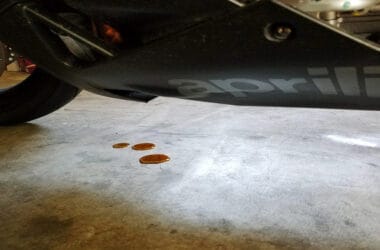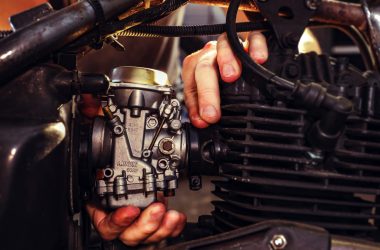Adjusting the appropriate amount of clutch lever free play and cable tightness or tension is essential. However, a loose or wobbly motorcycle clutch lever introduces friction and strain on the clutch cable, potentially causing damage to critical components of the clutch assembly such as the clutch plates and clutch housing. This can significantly impact your overall riding experience.
A loose or wobbly motorcycle clutch lever is caused by damaged threads of the clutch lever pivot bolt or nut, chipped or bent pivot bolt spacers or washers, or damage to the inner lining of the clutch pivot hole. Not fixing this problem can potentially cause damage to the clutch assembly or the cable over time.
In this article, we will discuss what causes motorcycle clutch lever to get loose or wobbly in detail. A couple of direct symptoms you should look out for when is lever is starting to get loose. And finally detailed step-by-step instructions on how to fix a loose motorcycle clutch lever properly.
Before delving into the process of fixing a loose clutch lever, it’s important to examine the early symptoms of a loose clutch lever and the underlying causes behind it.
Table of Contents
Early Symptoms Of A Loose Or Wobbly Motorcycle Clutch Lever
Early signs of a loose clutch lever are pretty easy to spot and there are some early symptoms of a wobbly clutch lever that you should address before it gets worse.
Here are the top most direct symptoms of a loose motorcycle clutch lever you should look out for.
- Excessive Wobble Of Clutch Lever
- Loose Pivot Point Bolt
- Inconsistent Clutch Engagement
- Rattling/Clunking Noise From Clutch Lever
Now we will go into brief details about each symptom so you can have a better understanding.
1. Excessive Wobble Of Clutch Lever
The first symptom is easy to spot as the clutch lever will wobble up and down and be loose when you try to pull in the lever.
A loose or wobbly clutch lever will increase the free play of the lever which can lead to other issues such as clutch dragging or clutch slipping.
You can check the lever by holding it by fingers, a little play is to be expected but if the clutch lever is moving by and down excessively then it’s certainly loose and needs to be tightened as soon as possible.
2. Loose Pivot Point Bolt
Pivot Bolt of the clutch lever holds the clutch lever in its place and gives it a proper clutch engaging and disengaging movement.
A loose pivot point bolt can be easily spotted as it will rattle or move whenever you try to pull in or release the clutch lever.
The pivot point bolt shouldn’t move and should be properly tightened to its appropriate torque.
3. Inconsistent Clutch Engagement & Disengagement
If your motorcycle clutch cable is in good condition and properly adjusted with a right clutch lever free play, but you are still experiencing inconsistent clutch disengagement & engagement. Then it’s time to look at the whole clutch lever unit as a whole for any kind of damage.
Inconsistency in clutch engagement while releasing the lever or vice versa is a clear indication of something going wrong with the clutch lever setup in this particular case.
4. Rattling/Clunking Noise From Clutch Lever
A properly adjusted clutch lever with no damage will perform a smooth swift motion of going back and forth when you try to pull in or release the clutch lever.
A loose clutch lever of the motorcycle will wobble up and down and will create a metallic rattling/clunking noise whenever you try to use the clutch lever.
Since all clutch levers are either made from stainless steel or aluminum, they will create a rattling/clunking noise once they get loose and wobbly.
You can also easily hear this noise just by holding the clutch lever with your fingers and moving it in an up-and-down motion.
These are the most common symptoms any rider could expect when the clutch lever gets loose or is about to get loose or wobbly.
What Are The Causes Of A Loose Clutch Lever?
To effectively address a loose clutch lever in your motorcycle, you must first understand the underlying causes. Here, we’ll delve into each potential cause.
Here is the list of the most common causes of a loose clutch lever.
- Clutch Lever Pivot Bolt Or Nut Threads Damaged
- Chipped Or Bent Clutch Pivot Bolt Washer
- Damaged Clutch Pivot Point Spacer
- Worn Clutch Pivot Bolt Hole
Now let’s get into details about each cause and what you should look out for.
1. Clutch Lever Pivot Bolt Or Nut Threads Damaged
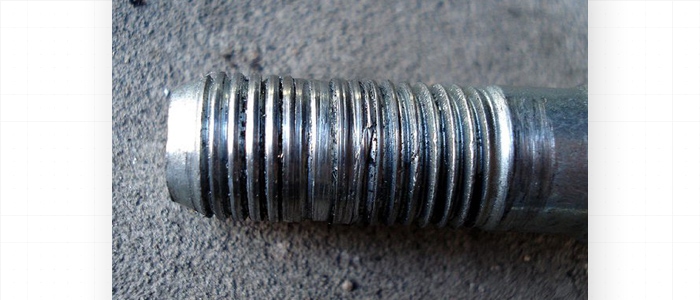
The first reason or cause for a loose clutch lever is a damaged pivot bolt or nut.
The pivot bolt and nut hold the clutch lever in place securely and if the threads of the bolt or nut get blunt or somehow get chipped/notched then the bolt would get loose in its socket/hole.
This will result in the clutch lever getting wobbly and limp/loose.
The pivot bolt of the clutch lever is located on the top of the lever near where the clutch cable connects.
2. Chipped Or Bent Clutch Pivot Bolt Washer

Most motorcycle clutch levers have a washer/shim that goes around the clutch lever pivot bolt to avoid direct metal-on-metal contact and to reduce friction.
Chipping or bending of the pivot bolt washer will introduce unwanted space inside the hole where the bolt is secured.
This will definitely cause the clutch lever to get loose and wobbly.
3. Damaged Clutch Pivot Point Spacer
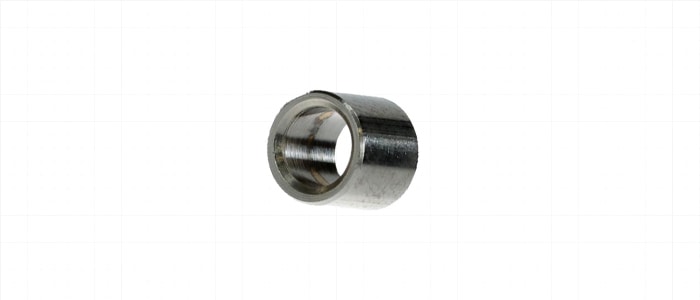
Some motorcycle use washer also known as shim which are like thin rings that goes around the pivot bolt but some motorcycles use spacers which are like small hollow cylinder.
Bending, chipping or thinning of the spacers will cause the pivot bolt to become loose and rattle inside the pivot hole.
So check your clutch lever pivot bolt spacers for any kind of damage.
4. Worn Clutch Pivot Bolt Hole
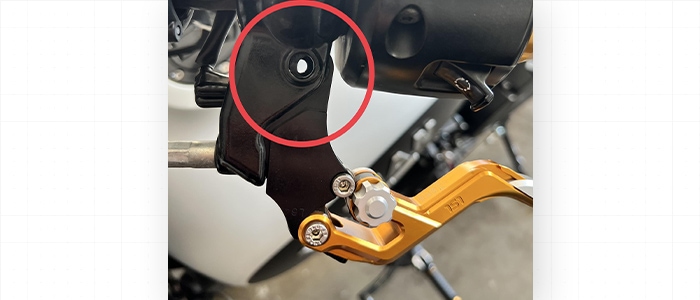
Over time the clutch lever pivot point hole could distort and the hole where the bolt goes in could get wider.
Other signs of damage may include the threads inside the hole getting flat/blunt which will cause the pivot bolt to not be secured in its place firmly.
So remove the clutch lever and the pivot bolt to clearly examine any kind of damage inside the pivot hole where the bolt goes into.
How to Fix A Loose Clutch Lever: A Step-By-Step Guide
Now, let’s explore the precise steps to fix a loose clutch lever of a motorcycle.
What You’ll Need:
- Hex Socket
- Ratchet
- Allen keys (if applicable)
- Lubricant or Grease
- Owner’s manual (for specifications)
Step 1: Loosen The Clutch Lever Adjustment Screw/Lock Nut
First, loosen the adjustment screw/lock nut in a counterclockwise direction.
Step 2: Remove Clutch Lever Pivot Point Bolt
To remove the pivot point bolt of the clutch lever will need a hex socket and a ratchet to loosen up the hex nut underneath the clutch lever which is holding the pivot bolt.
Loosen and remove the hex nut from underneath the lever and pop/push out the pivot bolt of the clutch lever.
Keep in mind that the spacer or washer of the pivot bolt will come out too. You will need to replace it if it’s damaged.
Step 3: Remove the Clutch Cable From The Lever
The clutch cable is connected to the clutch lever via a cap or clutch cable nipple inserted under the lever.
Align the opening cuts of the lock nut, and adjustment screw to easily detach the clutch cable nipple from underneath the clutch lever.
Step 4: Replace The Damaged Parts Of The Clutch Lever
Now inspect damaged parts of the clutch lever such as the washer, spacer, clutch pivot bolt or nut (Allen screw), and the threads or the hole of the clutch pivot bolt.
Replace these parts if they show any signs of damage such as bending, chipping, or flat threads on the bolt and nut.
And if the pivot hole is damaged then you buy a whole new clutch lever setup or just the clutch lever holder (perch).
Step 5: Reassemble the Clutch Lever
Once you replace the damaged parts, reassemble the clutch lever in the reverse order.
Apply a little lubrication/grease on the walls of the clutch lever holder where the lever goes in.
Tighten the clutch pivot bolt/Allen screw and nut to an appropriate torque by referencing your motorcycle’s service manual.
Step 6: Test & Enjoy
Once the whole clutch lever is reassembled by replacing the damaged parts and connecting it with the clutch cable, the clutch lever will stop wobbling.
Take it on a short ride to test the clutch lever and make changes to the clutch cable adjustment if needed.
And that’s how you fix a loose clutch lever of your motorcycle.
How Tight Should the Clutch Lever Be?
The ideal clutch lever tightness varies from rider to rider. It’s a matter of personal preference.
But in general, it is advised to have 10-20 mm of clutch lever free play to avoid clutch dragging, clutch slipping issues or hard clutch problem.
If you have installed an aftermarket clutch lever which is majority of the times smaller compared to the OEM levers, it is advised to have approximately 2-4mm of free play at the tip of the lever or from the start of the lever.
Conclusion
In conclusion, diagnosing and addressing a loose motorcycle clutch lever requires a keen understanding of the potential causes and early symptoms.
Regular maintenance, inspection, and precise adjustments are crucial for maintaining control and safety while riding.
By following the steps outlined on how to fix a loose or wobbly clutch lever in this article, you can ensure a tight and responsive clutch lever which will only enhance your riding experience.


